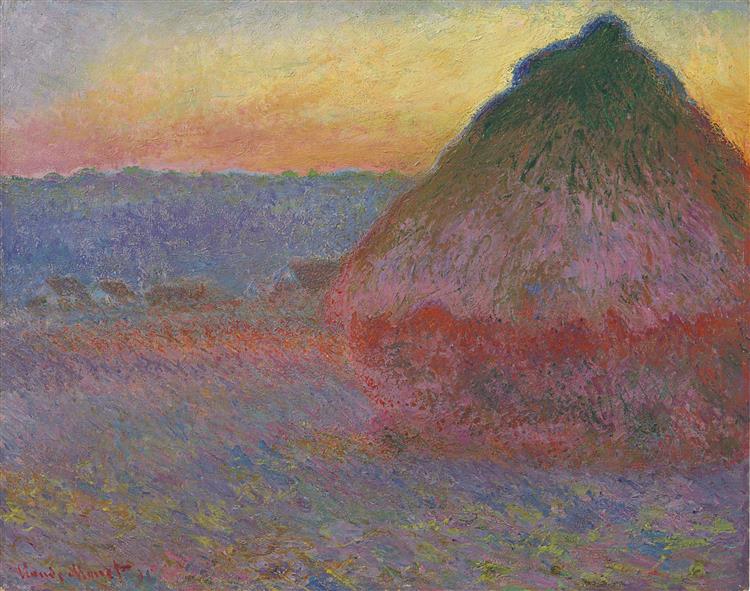描述
Claude Monet's "Stack of Grain in the Sunlight" (1891) is a sublime example of the Impressionist style, in which the artist manages to capture an ethereal moment of light and atmosphere surrounding his rural surroundings. Monet, one of the precursors of Impressionism, employs his signature technique to explore the interplay between light and color, using loose brushstrokes and a vibrant palette that evokes a sense of immediacy and movement in the work.
The composition of the painting focuses on a pile of grain, also known as a “meule,” which stands as a prominent element in the foreground. This motif, common in Monet’s work, symbolizes both rural life and the seasons of the year. The choice to depict the pile of grain seems to capture a specific moment in the agricultural cycle, perhaps indicative of the harvest, a recurring theme in Monet’s art and in French culture of his time. As for the absence of human figures, it is singular how the focus of the work remains solely on nature and the environment, suggesting a contemplation of the landscape rather than a human narrative.
The use of color is central to this painting. Monet applies a rich array of gold and yellow hues that represent the grain in the sun, contrasting with the cool palette of blues and greens in the background. This juxtaposition suggests not only the warmth of the day, but also a sense of tranquility and serenity that permeates the scene. The shadows created by the hues of the subject in the title reveal Monet's skill in seeing colors not simply as pigments, but as reflections of light that change with the weather and time of day.
Brushwork, one of the most significant tools of Impressionism, is particularly evident in this work. Monet uses touches of colour that shape the pile of cereal in an almost tactile manner, while elements in the background seem to dissolve with a luminosity that defies the precision of classical representation. This reflects the Impressionist philosophy of capturing visual experience rather than exact representation, an approach that Monet developed throughout his career.
It is interesting to note that “Stack of Cereals in the Sunlight” is part of a series of works that Monet painted between 1890 and 1891, dedicated to cereals in various light and weather conditions. This series also underlines his obsession with how variations in light can transform the perception of the landscape. At a time when realism dominated painting, Monet chose to celebrate the ephemeral, allowing the viewer to experience the beauty of the everyday through the language of colour and light.
In conclusion, “Stack of Grain in the Sunlight” is a work that goes beyond a simple image of rural life; it is a meditation on light, color, and the passage of time. Monet offers us a glimpse into his world and his way of seeing, where each brushstroke contributes to a fuller experience of the landscape, evoking emotions and offering a sensory representation of nature that resonates deeply with the viewer. The Impressionist master’s work continues to be a testament to the power of art to capture the essence of life in a fleeting moment, a principle that remains relevant in contemporary art.
KUADROS ©, a famous painting on your wall.
Hand-made oil painting reproductions, with the quality of professional artists and the distinctive seal of KUADROS ©.
Painting reproduction service with satisfaction guarantee. If you are not completely satisfied with the replica of your painting, we will refund 100% of your money.

